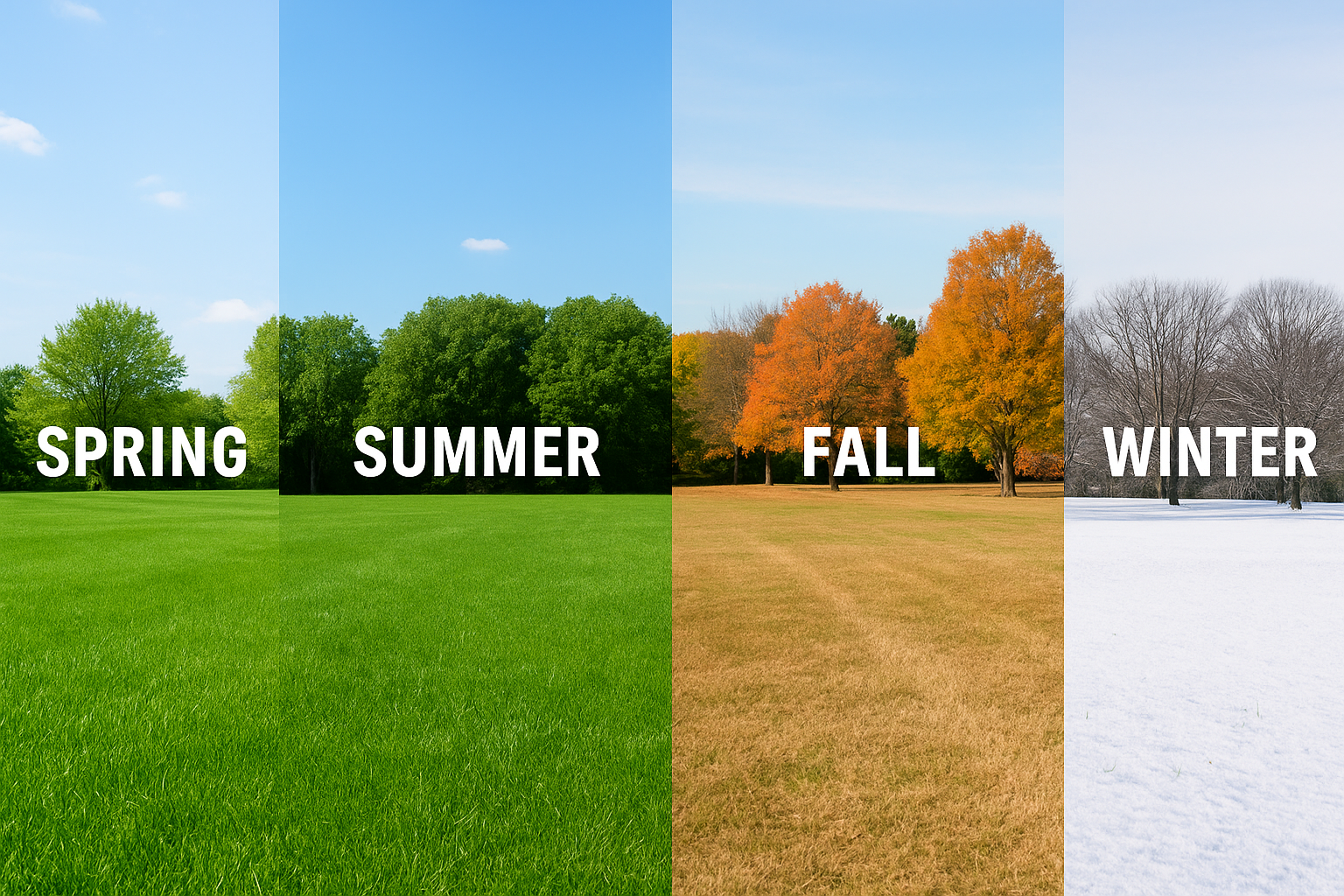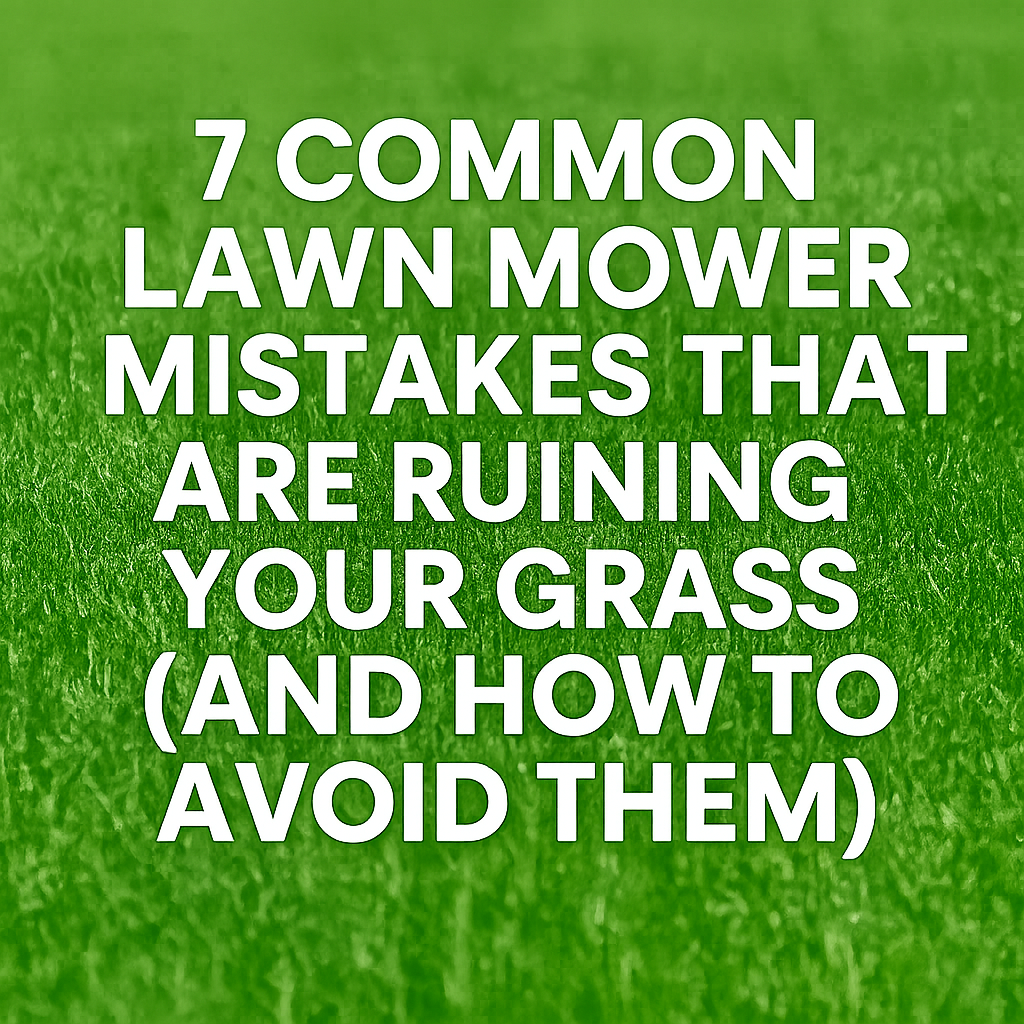One of the most common questions lawn owners ask is simple on the surface but surprisingly complex in practice: How often should I mow my lawn? The answer depends on your grass type, region, season, and even your mower.
In this guide, we break it all down so you can create a mowing schedule that keeps your lawn healthy, resilient, and looking sharp year-round.
Why Mowing Frequency Matters
Mowing isn’t just about keeping your yard tidy. Cutting your grass at the right intervals encourages dense growth, reduces weeds, and helps your turf resist pests and disease. On the flip side, mowing too often or too little can stress your grass, lead to scalping, or invite weed takeover.
The One-Third Rule
Before we get into specific schedules, remember this rule of thumb:
Never remove more than one-third of the grass blade at a time.
If your grass is too tall, bring it down gradually over multiple mowings rather than chopping it all at once. This helps prevent shock and keeps your lawn healthier.
General Mowing Frequency by Season
Spring
Grass growth surges in the spring, especially for cool-season grasses like Kentucky bluegrass, fescue, and ryegrass.
- Cool-season grass: Mow every 5 to 7 days.
- Warm-season grass (Bermuda, Zoysia, St. Augustine): Every 7 to 10 days as growth starts picking up.
Make sure your mower blade is sharp at the start of the season for clean cuts.
Summer
Growth slows during summer heat, but mowing remains important to keep the lawn neat and to reduce stress.
- Cool-season grass: Mow every 7 to 14 days, depending on rainfall and heat stress. Raise your cutting height slightly to help shade roots.
- Warm-season grass: Mow every 5 to 7 days. Warm-season grasses thrive in summer and may grow faster if watered regularly.
Avoid mowing during the hottest part of the day.
Fall
Grass growth speeds up again in the fall, especially for cool-season grasses that are preparing for winter.
- Cool-season grass: Mow every 5 to 7 days until growth slows.
- Warm-season grass: Every 10 to 14 days as the season winds down.
This is the time to lower your mower height gradually in preparation for winter, but don’t scalp the lawn.
Winter
In most regions, mowing pauses during winter dormancy.
- Cool-season grass: Rarely or not at all if the grass is dormant.
- Warm-season grass: Typically no mowing is needed unless you’re in a southern climate where growth continues.
Adjusting for Grass Type and Region
Here’s a quick cheat sheet:
| Grass Type | Typical Peak Growth Season | Mowing Frequency Peak Season |
|---|---|---|
| Kentucky Bluegrass | Spring and Fall | Every 5-7 days |
| Fescue | Spring and Fall | Every 5-7 days |
| Ryegrass | Spring and Fall | Every 5-7 days |
| Bermuda | Summer | Every 5-7 days |
| Zoysia | Summer | Every 5-7 days |
| St. Augustine | Summer | Every 7-10 days |
If you live in the North, you’ll mow more in spring and fall. Southern homeowners will hit peak mowing in summer.
Signs You’re Mowing Too Often or Not Enough
- Too often: Grass looks stressed, weak, or brown.
- Not enough: The lawn looks shaggy, uneven, or starts to develop weeds.
If you’re leaving clumps of clippings behind, that’s another clue you’re either mowing too infrequently or cutting too much at once.
Final Tips for Mowing Success
- Always mow with sharp blades to avoid tearing grass.
- Vary your mowing pattern each time to avoid ruts.
- Leave clippings on the lawn (mulching) to return nutrients unless they’re clumping.
- Adjust height and frequency based on weather. Grass grows faster in cool, wet conditions and slower in heat or drought.



